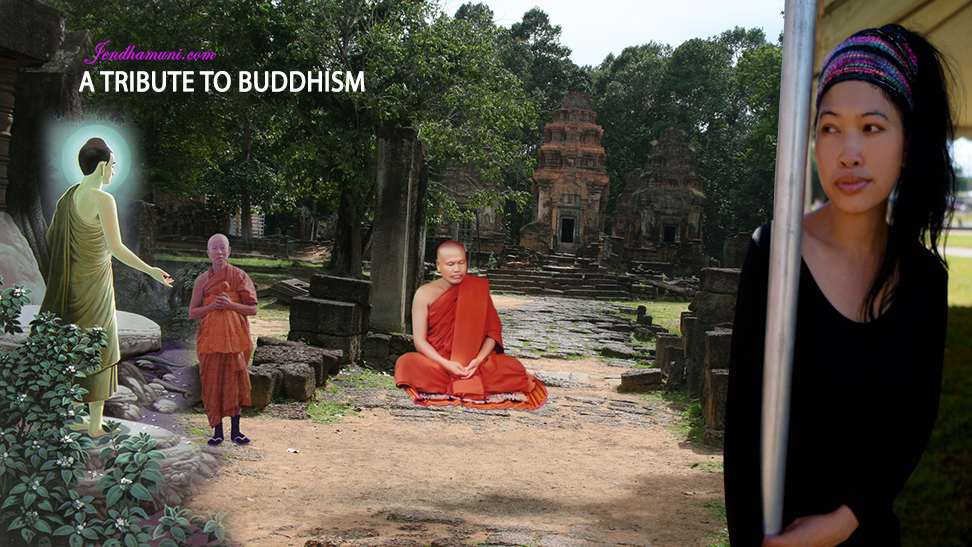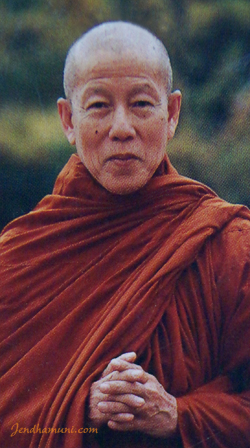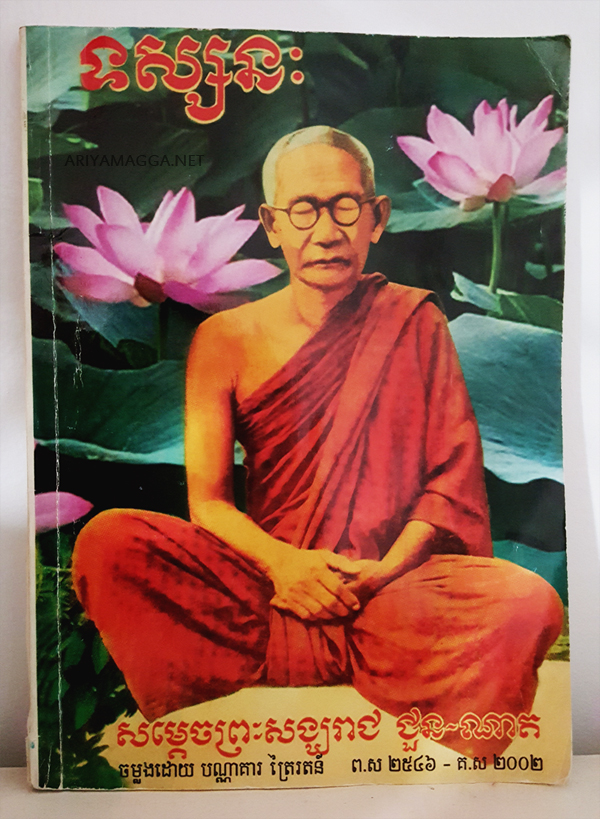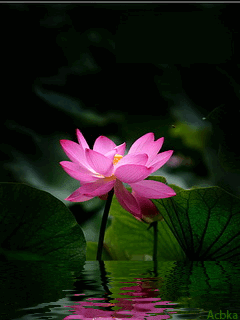
A Dhammatalk by Ajahn Chah
Take a look at the example of the Buddha. Both in his own practice and in his methods for teaching the disciples he was exemplary. The Buddha taught the standards of practice as skillful means for getting rid of conceit, he couldn’t do the practice for us. Having heard that teaching we must further teach ourselves, practice for ourselves. The results will arise here, not at the teaching.
The Buddha’s teaching can only enable us to get an initial understanding of the Dhamma, but the Dhamma is not yet within our hearts. Why not? Because we haven’t yet practiced, we haven’t yet taught ourselves. The Dhamma arises at the practice. If you know it, you know it through the practice. If you doubt it, you doubt it at the practice. Teachings from the Masters may be true, but simply listening to Dhamma is not yet enough to enable us to realize it. The teaching simply points out the way to realize. To realize the Dhamma we must take that teaching and bring it into our hearts. That part which is for the body we apply to the body, that part which is for the speech we apply to the speech, and that part which is for the mind we apply to the mind. This means that after hearing the teaching we must further teach ourselves to know that Dhamma, to be that Dhamma.
The Buddha said that those who simply believe others are not truly wise. A wise person practices until he is one with the Dhamma, until he can have confidence in himself, independent of others.
On one occasion, while Venerable Sāriputta was sitting, listening respectfully at his feet as the Buddha expounded the Dhamma, the Buddha turned to him and asked,
”Sāriputta, do you believe this teaching?”
Venerable Sāriputta replied, ”No, I don’t yet believe it.”
Now this is a good illustration. Venerable Sāriputta listened, and he took note. When he said he didn’t yet believe he wasn’t being careless, he was speaking the truth. He simply took note of that teaching, because he had not yet developed his own understanding of it, so he told the Buddha that he didn’t yet believe – because he really didn’t believe. These words almost sound as if VenerableSāriputta was being rude, but actually he wasn’t. He spoke the truth, and the Buddha praised him for it.
”Good, good, Sāriputta. A wise person doesn’t readily believe, he should consider first before believing.”
Conviction in a belief can take various forms. One form reasons according to Dhamma, while another form is contrary to the Dhamma. This second way is heedless, it is a foolhardy understanding, micchā-ditthi, wrong view. One doesn’t listen to anybody else.
Take the example of Dīghanakha the Brahman. This Brahman only believed himself, he wouldn’t believe others. At one time when the Buddha was resting at Rājagaha, Dīghanakha went to listen to his teaching. Or you might say that Dīghanakha went to teach the Buddha because he was intent on expounding his own views…
”I am of the view that nothing suits me.”
This was his view. The Buddha listened to Dīghanakha’s view and then answered,
”Brahman, this view of yours doesn’t suit you either.”
When the Buddha had answered in this way, Dīghanakha was stumped. He didn’t know what to say. The Buddha explained in many ways, till the Brahman understood. He stopped to reflect and saw….
”Hmm, this view of mine isn’t right.” Continue reading →


















